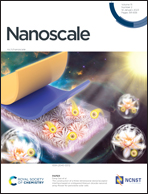Towards a graphene semi/hybrid-nanogap: a new architecture for ultrafast DNA sequencing†
Abstract
The tremendous upsurge in the research of next-generation sequencing (NGS) methods has broadly been driven by the rise of the wonder material graphene and continues to dominate the futuristic approaches for fast and accurate DNA sequencing. The success of graphene has also triggered the search for many new potential NGS methods capable of ultrafast, reliable, and controlled DNA sequencing. The present study delves into the potential of a new NGS architecture utilizing graphene, namely, a ‘semi/hybrid-nanogap’ for the identification of DNA nucleobases with single-base resolution. In the framework of first-principles density functional theory methods, we have calculated the transmission function and current–voltage (I–V) characteristics which are of particular significance for DNA sequencing applications. It is noted that the interaction energy values are significantly reduced compared to the previously reported graphene nanodevices, which can lead to a controlled translocation during experimental measurements. Based on the transmission function, each nucleobase can be identified with pertinent sensitivity. It is noticed that the use of highly conductive nucleobase analogs can facilitate improved single nucleobase sensing by increasing the transmission sensitivity. Therefore, we believe that the present study opens up promising frontiers for sequencing applications.



 Please wait while we load your content...
Please wait while we load your content...